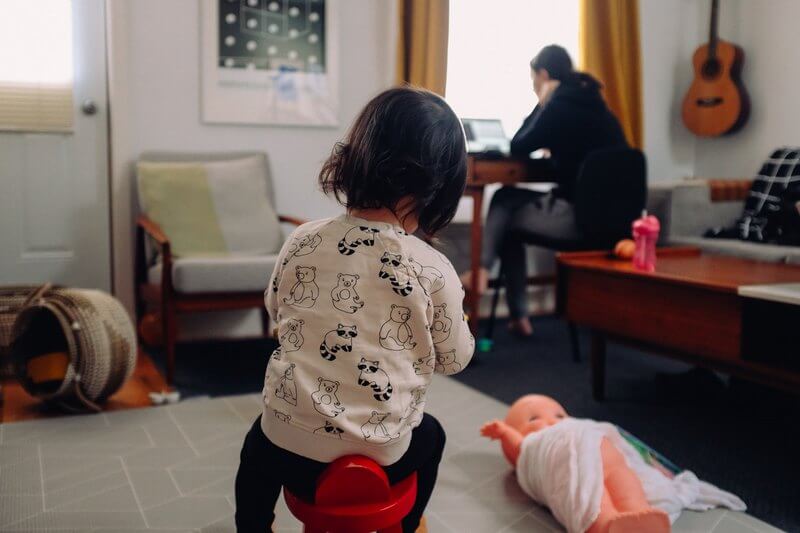
Is working from home the new normal?
There’s no doubt about it; working resiliently remotely is a learned skill. Like me, you are observing the seismic shift of corporations learning to enable most of their workforce to work from home. Also, like me, as a resilience professional, you are considering the impact of this change on preparedness and crisis response. You’re also considering how this changes risk, safety, and security. For those organizations that remain office-based, you are wondering how talent and operations can stay at peak performance in this challenging marketplace.
Office-based companies, whether from necessity–like manufacturing or preference–like investment firms are carefully gauging how a post-COVID world will impact their profitability. The same for those standardizing a hybrid workplace or event going entirely virtual. Generally, shifts in workforce norms occur at a much slower pace. Think of the industrial revolution or women in the workforce. The changes happened slowly, often over several generations. COVID accelerated the rate of change over two short years. The big question on the minds of think tanks and leadership is to discover if working remotely is the new normal.

How this impacts resilience activities
The days of gathering your crisis team or sitting around a conference table for a business recovery exercise are likely over. Not everyone will dump this format. However, it is more likely that you will be conducting hybrid sessions with some personnel participating remotely. Or, you will conduct fully remote sessions. I am doing it now. It is possible if you haven’t dipped your toe in these waters. But, it takes a different approach and skill sets (like leveraging tech platforms) to keep your teams on track. Pre-COVID, I exercised business function leadership across multiple states with great success. Over the past few years, I’ve regularly conducted virtual tabletop exercises with diverse stakeholders to rave reviews.
Then, for planners, it means taking meetings using Zoom-like tools and conducting Business Impacts Analysis (BIAs) virtually. Before the pandemic, I regularly met with subject matter experts all over the US and internationally. So, you can do it, too. Now, some will argue that the process will not be as effective. I agree there are merits to initial in-person meetings to establish rapport. Yet, if you do not learn how to pivot your program to be agile and flexible to do both, it will suffer in most workplaces in the future.

Focusing on resilient outcomes
While actively tracking the evolution of business changes, I saw that The Society for Industrial and Organizational Psychology (SIOP) is hosting a leading-edge conference on Rethinking Employee Experience to Create Agility and Resilience for the “Next Normal” this Fall. Last year, Deloitte, one of the big professional services firms, was already sharing how business could thrive using a hybrid work model. They acknowledged that technological solutions were only part of the answer and that focusing on business outcomes is the lynchpin. So, it takes leveraging assets like the right talent, technology, organizational design, and leadership to create a Northstar to drive business growth.
We must factor in how people work and what aligns with the corporate strategy for resilience programs. In A Climate Of Change And Why Resilience Matters, I shared external factors influencing a program’s risk management. To be truly effective, you also need to consider the internal factors, including workplace changes such as the evolving way employees work on your heat map. It’s a different way of thinking, but there are many aspects to consider if your workforce works remotely 100% or some of the time.

My own experience guides me
Working resiliently remotely is not just a phrase. It’s something I’ve learned to do over the past seven years. Earlier, I said it is a skill because it takes a shift in communication skills and approach. Instead of being able to walk down a hall and into a leader’s office, I have to schedule time or engage using instant messages. Admittedly, it takes away some of the personability of interactions, but on the flip side, it has humanized us in a way that didn’t exist pre-COVID. We are all a little more allowing kids, pets, and ambient noise (lawnmowers and sirens, anyone?) the make appearances on our Zoom calls. I learned to use my webcam judiciously.
It meant moving down the hall to share my dog’s playroom, the bonus room over my garage. Yes, I’m fortunate to have the space, and I know not everyone is so blessed. So this is why in-office collaborative meetings, shared workspace, and hybrid office arrangements will continue to flourish. Most industries and businesses supporting that model will continue to travel to office spaces. However, I predict the footprint will shrink more than it already has. Enhanced agility of employees and leaders to embrace new ways of working will drive innovation and prosperity. Because really, which of us likes to work in a cubical?

Resiliency at home builds org preparedness
Now, the purpose of this blog is to share tips for working resiliently remotely. And considerations for planning and responding resiliently. However, I will admit that I sometimes crave face-to-face interactions. Before the pandemic, I did a traveling roadshow combining workplace violence education and crisis management exercise. It took me across the US, and I always enjoy meeting people and visiting new sites. However, my remote office was my home base. In 2020, Forbes forecasted the Developing Trend: New Homes Will Include Personalized Home Offices.
Top tips on building personal resiliency for remote working:
- Find a quiet space to work. If you don’t have a stand-alone office, there is plenty of inspiration on sites like Houzz to create an office nook. Sometimes, you work where it is most conducive.
- Use technology to your advantage. Leverage existing company tools and be open to learning new platforms (MS Teams, WhatsApp, Lucidspark, Mural, team project management software). All of these help support collaboration for virtual and hybrid activities.
- Organize your day and workspace so that when you are “at work,” you are at work. Some people struggle to focus while working from home and not being distracted by household chores, children, pets, etc. It can take a mind shift change, but many of us are used to it now.
- Give yourself some flexibility. The lines between the personal and professional can get blurred. Walk your dog while you are on that call if you can. Don’t endanger yourself and judge your work culture, but one of the gifts of remote working is the increased ability to balance our lives.
- Don’t overwork. Set office hours and limit checking email after hours. Knowing it isn’t possible for many of us in the Resilience discipline, take your time off seriously to unplug.
- Practice wellness and self-care, and teach this to others. See my blog, Self-Care For Disaster Professionals, if you need inspiration.

Preparedness now and for the future
With more of the workforce operating wholly or partially from remote workspaces, we must examine how our resilience planning needs updating. Working resiliently remotely is both an individual effort and an organizational one. I expect best practices to evolve. However, as practitioners, there are aspects we can address today to support increased business resilience immediately. One of the ways to do this is to share tips like those above with your virtual and hybrid workforce.
Let me know if the comments below if you want me to expand on any of these topics. Share what you think the future of work is and if you are changing your program activities for the new normal. My next blog will focus on areas to consider for remote workforce preparedness planning, along with considerations for the changing office environment.

2 thoughts on “Working Resiliently Remotely”
Good insights. Understanding this change will be most important for leaders in the continuity and resilience programs. If the understanding will not be clear there could elements of vital aspects of the program may get either diluted or dropped due to lack of the right attention. One of such program elements is “Testing”.
Thank you